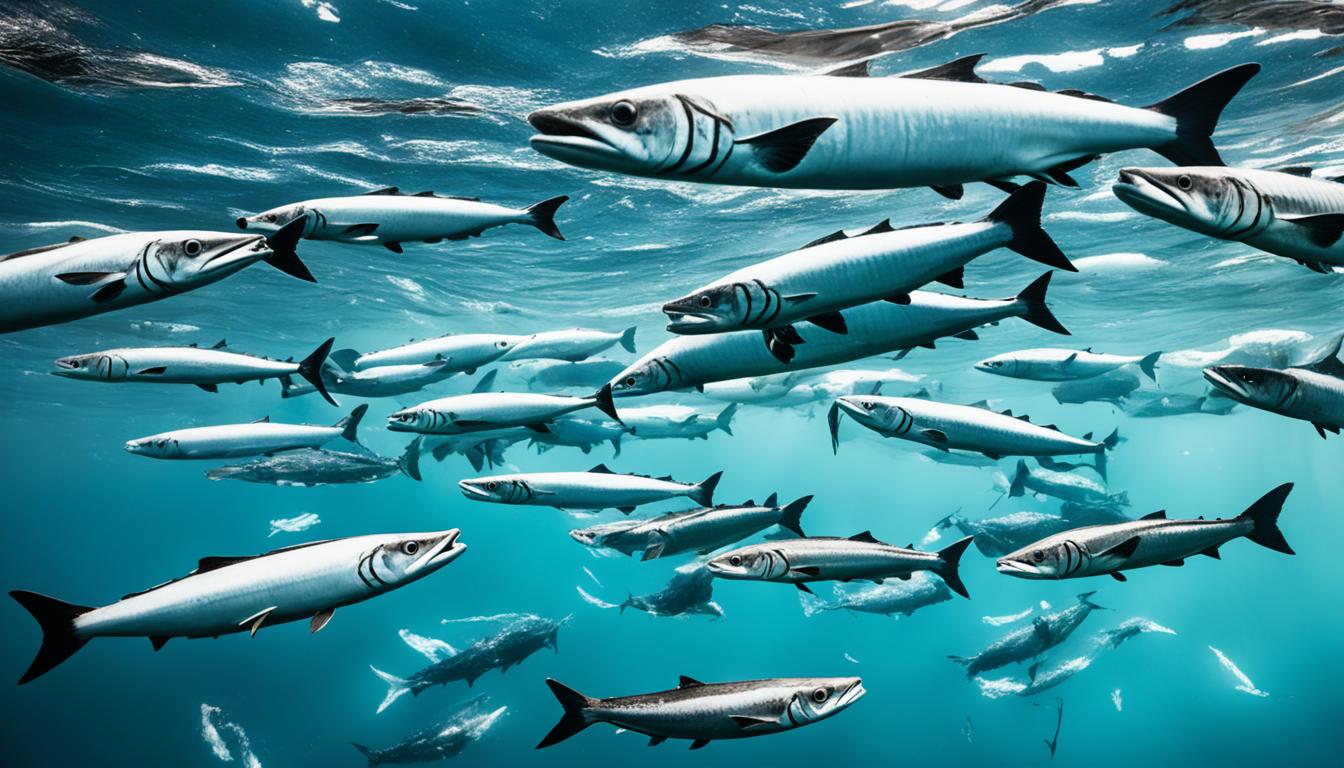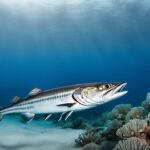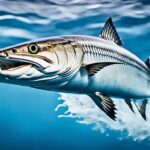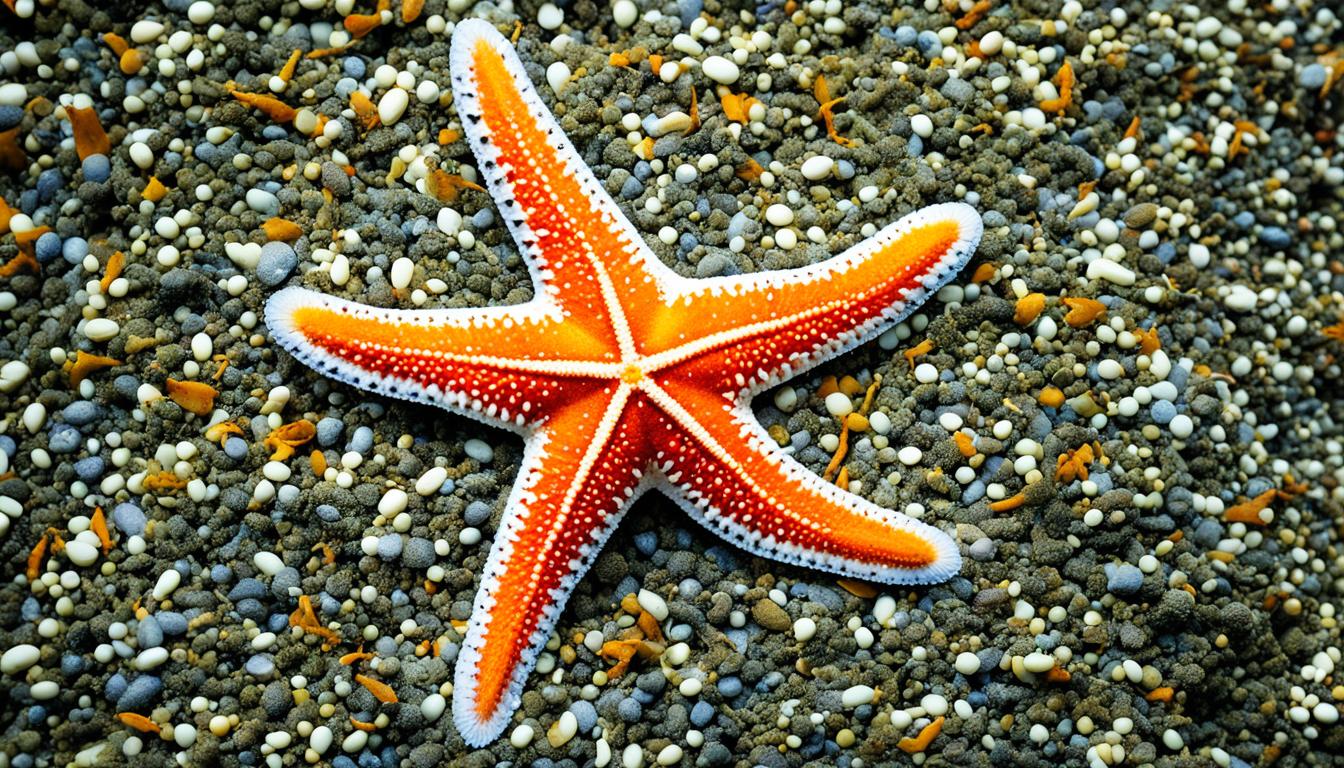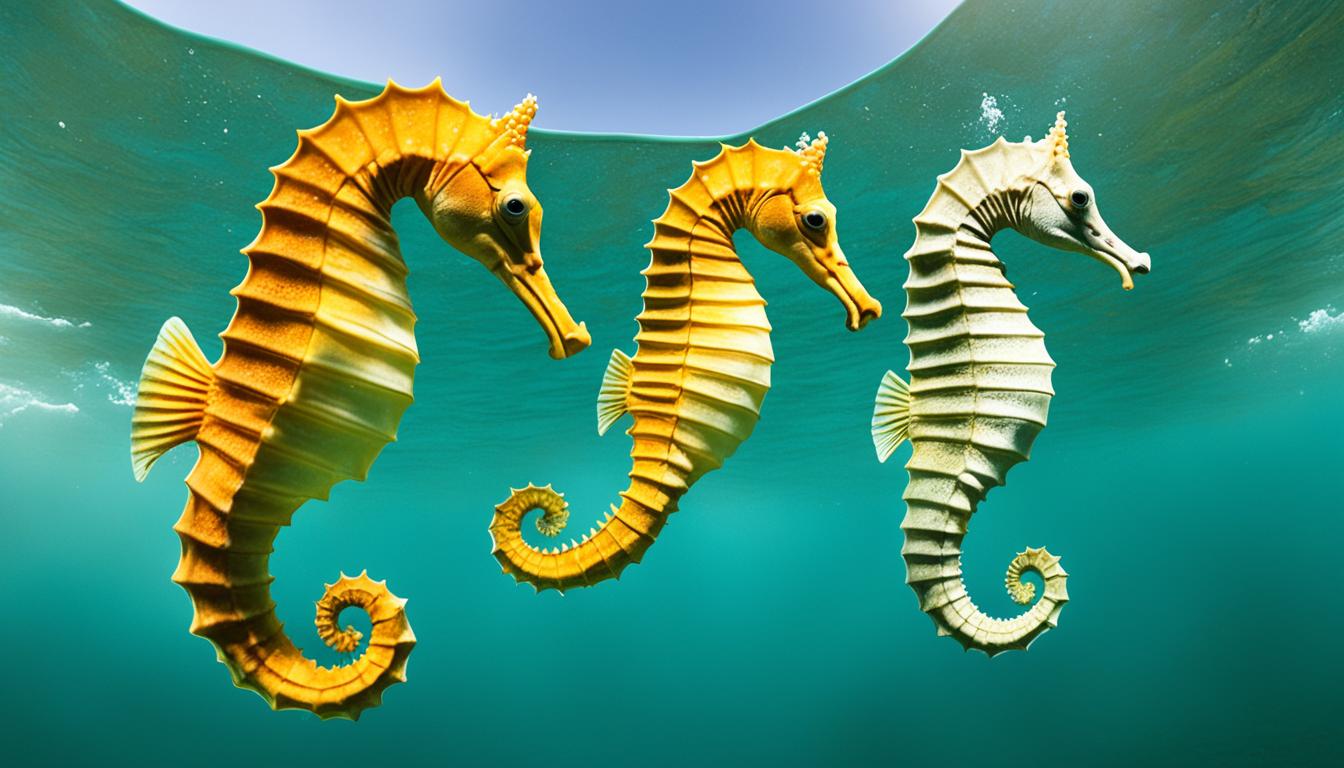Barracudas are amazing predators found in tropical and subtropical waters. They belong to the Sphyraena genus. These fish are not endangered yet, but they face many challenges that affect their survival and numbers. You might ask, what threats do barracudas face? Well, threats include overfishing, destroying their homes, and pollution. These issues are big problems for their survival.
Understanding these threats helps us see how important barracudas are in their ecosystems. It also helps us fight for their protection.
Understanding Barracudas: An Overview
Barracudas are fascinating marine creatures. They are among the ocean’s top meat-eaters. Their sleek bodies and speed make them interesting to learn about.
Common Species of Barracudas
There are over 20 species of barracudas in the Sphyraena family. The great barracuda is the most well-known. Other important ones are the northern barracuda and the Pacific barracuda. Each type has its own special features.
Physical Characteristics
Barracudas have long, thin bodies that can be up to 6 feet long. They have sharp teeth and a streamlined shape for catching prey. This design helps them move fast and hide from predators.
Diet and Hunting Behavior
Barracudas eat smaller fish like mullets and anchovies. They hunt by ambushing their prey. They can spot prey from far away and chase it at speeds of up to 45 mph.
| Species | Common Habitat | Average Length | Speed |
|---|---|---|---|
| Great Barracuda | Tropical and subtropical waters | Up to 6 feet | 45 mph |
| Northern Barracuda | Coastal waters of North America | Up to 3 feet | 36 mph |
| Pacific Barracuda | Warm waters of the Pacific | Up to 4 feet | 40 mph |
What threats do barracudas face?
Barracudas are fast and agile fish, but they face many threats. These threats can greatly affect their numbers. It’s important to know about these challenges to protect them. This section talks about the dangers they face from other animals and humans.
Natural Predators and Competition
Adult barracudas are top predators, but they’re not safe from harm. Sharks, dolphins, and orcas often eat them, especially the young ones. They also compete for food and space with other fish.
When there are fewer fish around because of overfishing and losing homes, barracudas have a hard time finding food. This can make it hard for them to survive in the long run.
Human Activity and Its Impacts
Humans are a big threat to barracudas. Fishing for fun or to eat has greatly reduced their numbers. Illegal fishing makes things even worse by killing more barracudas.
Also, building along the coast can make life hard for barracudas. We need to act fast to protect them and their homes.
| Threat Type | Description |
|---|---|
| Natural Predators | Sharks, dolphins, and orcas prey on juvenile barracudas. |
| Resource Competition | Declines in marine fish populations lead to food scarcity. |
| Overfishing | Sport and commercial fishing practices reduce barracuda numbers. |
| Illegal Fishing | Unregulated fishing contributes to the decline of barracuda populations. |
| Habitat Destruction | Coastal development disrupts the barracuda’s natural environment. |
Overfishing Effects on Barracuda Population
The balance of barracuda populations is under threat from human actions, mainly overfishing. It’s vital to understand how fishing affects these fish to see the impact.
The Impact of Sports Fishing
Sport fishers chase barracudas for their size and strength. This makes them a favorite catch, especially where trophy hunting is common. Even with rules to protect them, local barracuda numbers are falling. Sports fishing impacts the population a lot, causing a decrease in numbers. It’s important to fish responsibly to keep barracuda numbers healthy for the future.
Commercial Fishing Practices
Commercial fishing also threatens barracudas. Bycatch is a big problem, as many non-target species get caught. Trawling hurts young barracudas and their homes. This speeds up the decline of barracuda numbers, making the overfishing effects on barracuda population worse. Using sustainable fishing can help protect barracudas and the oceans they live in.
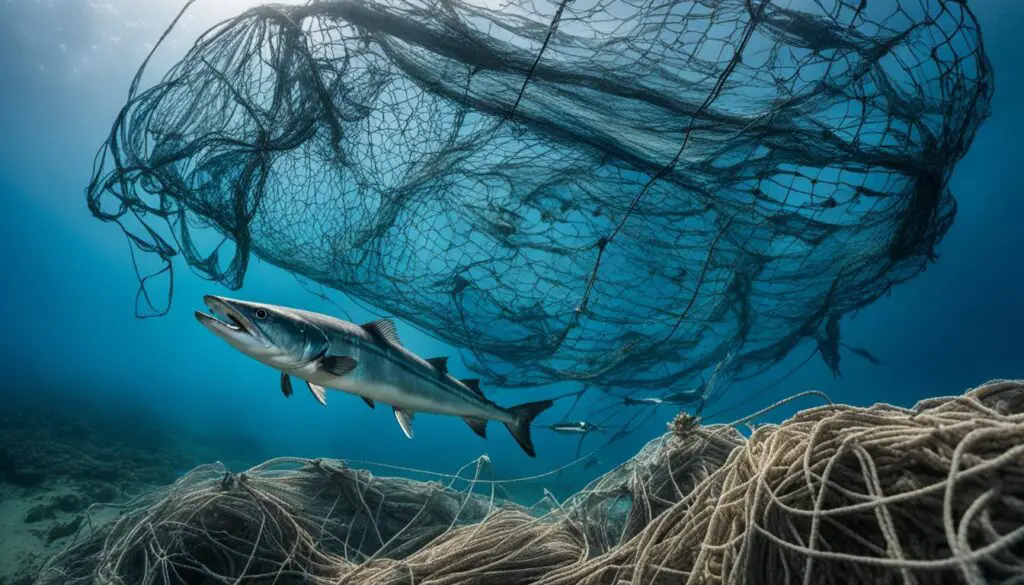
| Aspect | Sports Fishing Impact | Commercial Fishing Impact |
|---|---|---|
| Target Species | Barracuda | Barracuda, along with other marine species |
| Population Decline | Localized declines due to trophy hunting | Significant decline due to bycatch |
| Regulation | Often regulated but varies by region | Typically less regulated, leading to overexploitation |
| Conservation Efforts | Encourages sustainable practices among anglers | Requires stricter enforcement of sustainable methods |
Habitat Destruction Impact on Barracudas
Barracudas face big dangers from environmental changes. Coral reefs are key to their survival. They provide places to breed and hunt.
Coral Reef Degradation
Coral reefs are crucial for barracudas’ survival. They are full of life and help barracudas breed and hunt. But, climate change and pollution harm these reefs.
This hurts barracuda populations. They have fewer places to live and less food. The loss of reefs also harms the whole ocean’s balance. We need to act fast to save these important places.
Coastal Development Consequences
Building along the coast hurts barracuda homes. Mangrove forests, where young barracudas live, are at risk. These forests break up, making it hard for barracudas to move and find food.
This limits how many barracudas can live. Saving coastal areas is now more important than ever. We must act to protect these places before it’s too late.
Pollution Risks for Barracudas
The threats to marine ecosystems are growing, and so are the pollution risks for barracudas. These colorful predators may look tough, but they face many pollutants that harm their health and survival. It’s important to understand these risks to protect the barracuda population and the ocean.
Toxic Chemicals and Bioaccumulation
Barracudas are at risk from toxic chemicals and bioaccumulation. Polluted waters bring in heavy metals and PCBs, which enter the food chain. These chemicals build up in barracudas over time, threatening their health and ours too. It’s crucial to know about these toxins to protect marine life and keep it safe for us.
Marine Debris and Its Effects
Marine debris, especially plastic, is a big problem for barracudas. Eating marine debris can cause suffocation, starvation, and getting tangled, hurting their health. When barracudas eat plastic, they can also take in harmful substances, making health issues worse and affecting their ability to reproduce. Dealing with plastic waste in oceans is key to reducing pollution risks for barracudas and keeping the marine ecosystem balanced.

